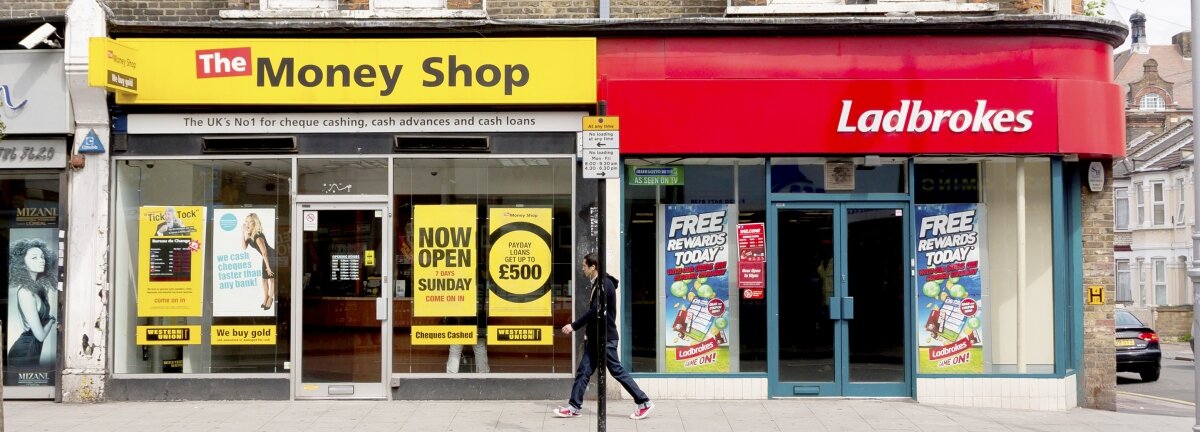Toxic high streets

As part of our Active by Design campaign we asked Newcastle University's Tim Townshend to discuss the growing body of evidence that suggests our high streets are becoming bad for our health.
Are some shopping streets in poorer neighbourhoods actually harmful to physical and mental health?
In the last couple of decades local shopping streets have completely changed. In upmarket neighbourhoods, it's all about delis, bistros and ruinously expensive kitchen shops. However, in poorer areas there has been an explosion in fast-food outlets - selling energy-dense, but nutritionally poor food; pawnbrokers - offering instant cash at horrendous interest rates; and betting shops – crammed with electronic gaming machines (EGMs) where you can bet hundreds of pounds in just minutes; among other potentially unhealthy uses.
Research has established links between the proliferation of fast food takeaways and obesity in older children
We know that the availability/accessibility of some shops and services can be linked to use/abuse and thereby health issues. For example, research has recently established links between the proliferation of fast food takeaways and obesity in older children in the UK. Similarly, research in the US has linked multiple payday loan type outlets with people taking out multiple high interest loans, either concurrently or one after another - leading to personal debt, which is in turn linked to poor mental health.
There are however many gaps in the research and the impact of co-location of these unhealthy shops and services across communities has yet to be fully investigated. But the existing evidence suggests that this may be a serious problem for communities where these clusters exist.
What might be done about this? Restrictive planning policies, for example, may have some effect. Some local authorities now have policies for restricting new fast-food outlets near schools and children's centres – which has had some success, though frustratingly some decisions have been overturned at planning appeal.
Given that some of the traditional uses may be no longer be economically viable, even if conversion to unhealthy shops and services is resisted, this means the units may sit empty and become a target for graffiti, vandalism etc, which only adds to the toxic mix.
On the other hand among these deeply unhealthy uses it is possible to find shops like independent greengrocers selling really good quality fresh produce at reasonable prices – could more ‘healthy’ uses be encouraged through a fundamental overhaul of local rates system?
Whatever the approach, action is needed now!
Subscribe to our newsletter
Want to keep up with the latest from the Design Council?
